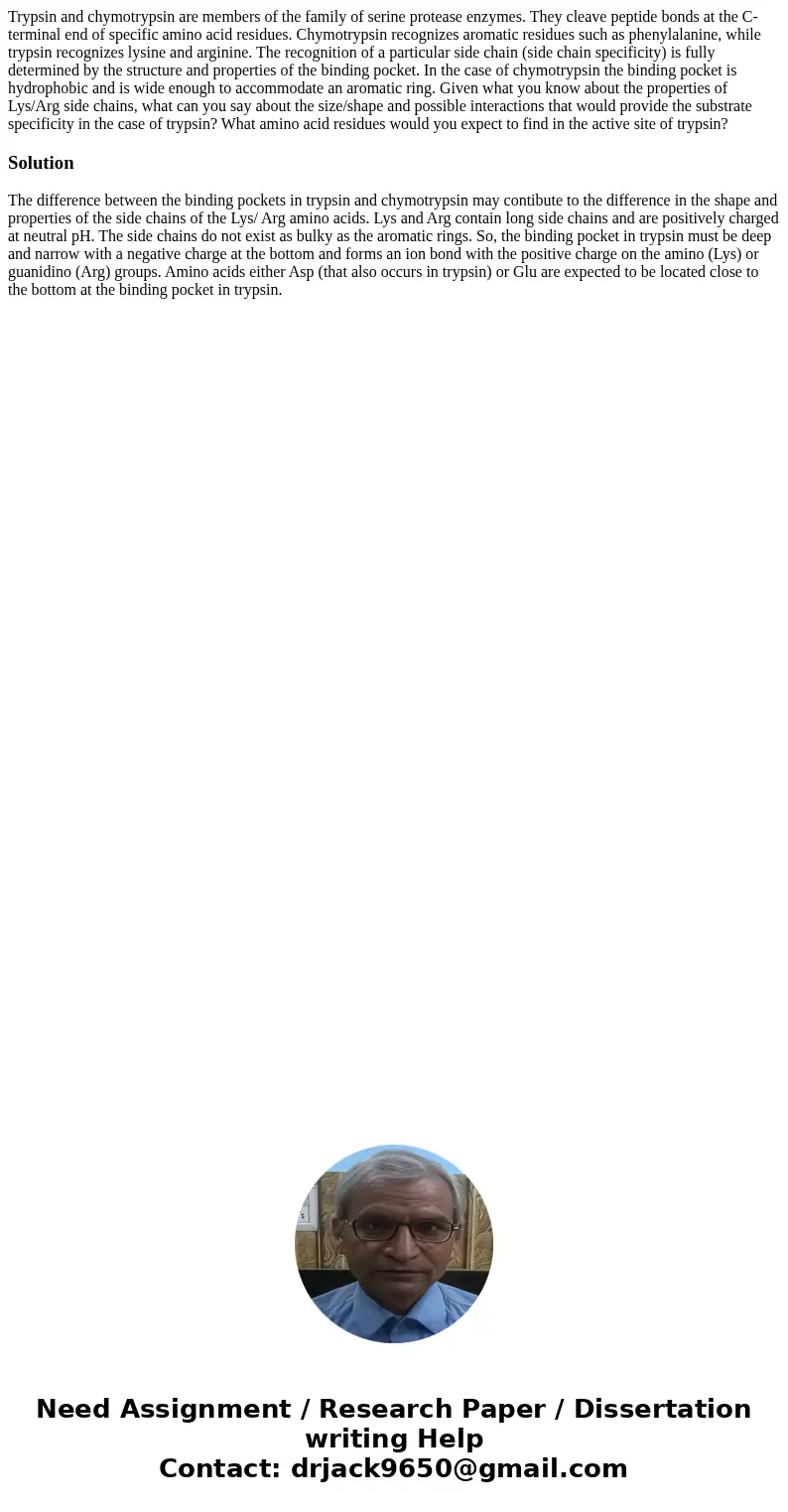Trypsin and chymotrypsin are members of the family of serine
Trypsin and chymotrypsin are members of the family of serine protease enzymes. They cleave peptide bonds at the C-terminal end of specific amino acid residues. Chymotrypsin recognizes aromatic residues such as phenylalanine, while trypsin recognizes lysine and arginine. The recognition of a particular side chain (side chain specificity) is fully determined by the structure and properties of the binding pocket. In the case of chymotrypsin the binding pocket is hydrophobic and is wide enough to accommodate an aromatic ring. Given what you know about the properties of Lys/Arg side chains, what can you say about the size/shape and possible interactions that would provide the substrate specificity in the case of trypsin? What amino acid residues would you expect to find in the active site of trypsin?
Solution
The difference between the binding pockets in trypsin and chymotrypsin may contibute to the difference in the shape and properties of the side chains of the Lys/ Arg amino acids. Lys and Arg contain long side chains and are positively charged at neutral pH. The side chains do not exist as bulky as the aromatic rings. So, the binding pocket in trypsin must be deep and narrow with a negative charge at the bottom and forms an ion bond with the positive charge on the amino (Lys) or guanidino (Arg) groups. Amino acids either Asp (that also occurs in trypsin) or Glu are expected to be located close to the bottom at the binding pocket in trypsin.

 Homework Sourse
Homework Sourse